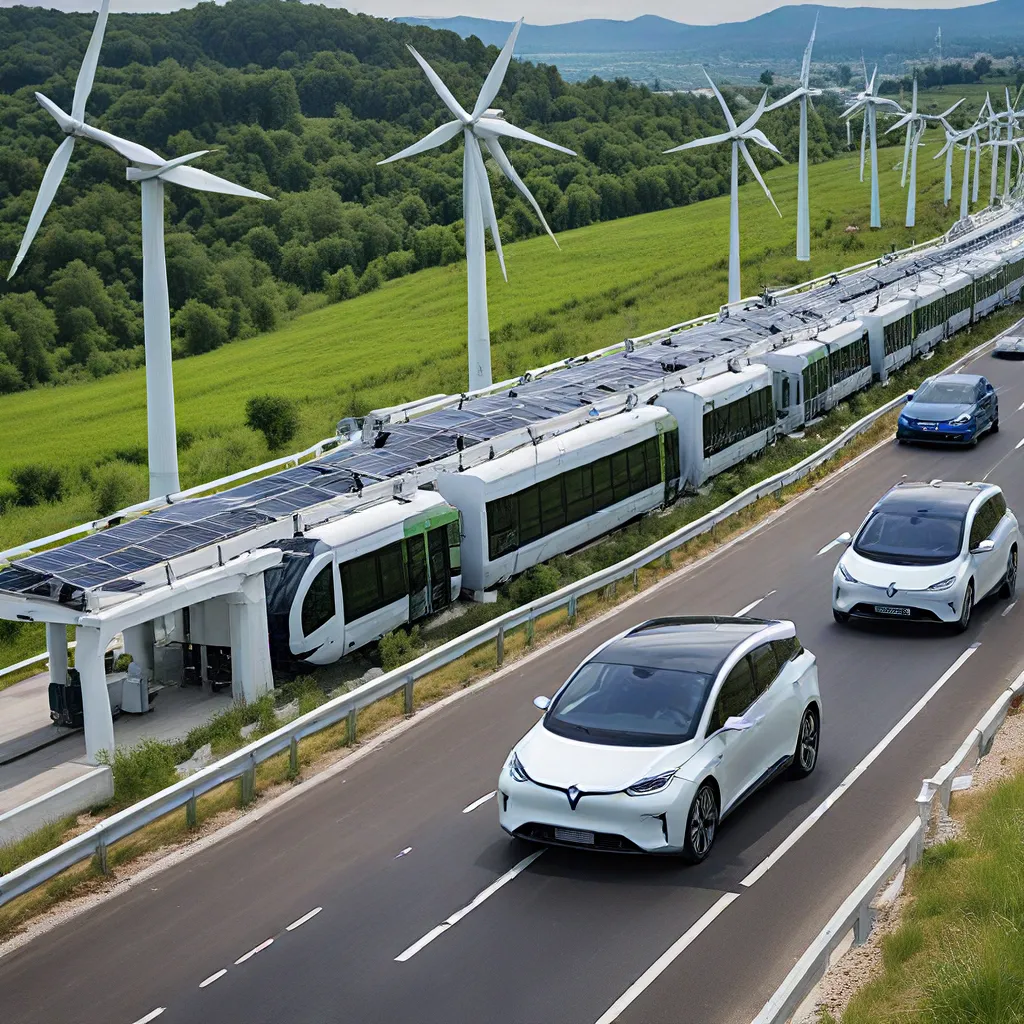
Buckle up, folks! We’re about to take a thrilling ride into the future of transportation. From electric vehicles (EVs) that run on the power of the sun to hybrids that sip fuel like a hummingbird, the landscape of how we get from point A to point B is changing faster than a Formula 1 race car.
The Electric Revolution
Remember when electric cars were a novelty, something you’d only see in a sci-fi movie or driven by a tech-savvy eccentric? Well, those days are long gone. EVs have well and truly arrived, and they’re poised to dominate the roads of tomorrow.
Let me paint you a picture. Imagine gliding silently down the highway, your car’s only sound being the gentle hum of the electric motor. No more trips to the gas station, no more worrying about fluctuating fuel prices. Instead, you simply plug in at home or work, and voila – your ride is recharged and ready to go.
According to the experts, all-electric vehicles and plug-in hybrids (PHEVs) have a significant advantage when it comes to fuel costs. Depending on how you drive, these futuristic rides can achieve over 130 miles per gallon of gasoline equivalent (MPGe), leaving their gas-guzzling cousins in the dust. And let’s not forget about the environmental benefits – zero tailpipe emissions for all-electric vehicles and none when PHEVs are in electric mode.
Hybrid Harmony
But EVs aren’t the only game-changers on the block. Hybrid electric vehicles (HEVs) are also making waves, using a combination of gas and electric power to deliver some serious fuel savings.
Take the Toyota Corolla Hybrid, for example. According to FuelEconomy.gov, this little eco-warrior boasts an impressive 50 miles per gallon (MPG) in combined city and highway driving. That’s a whole 15 MPG better than the conventional Corolla. And the best part? Hybrid tech has become so advanced that the driving experience is virtually indistinguishable from a regular gas-powered car.
So, whether you’re looking to save the planet or your wallet (or both!), hybrids offer a compelling middle ground between traditional vehicles and their all-electric counterparts.
Charging Forward
Of course, the success of EVs and hybrids relies heavily on the availability of charging infrastructure. After all, what good is an electric car if you can’t find a place to plug it in?
Luckily, the charging network is growing rapidly. According to the Alternative Fueling Station Locator, there are now more than 53,000 public charging stations in the United States, offering over 137,000 charging ports. And the numbers keep climbing as automakers, utilities, and government agencies work together to build out this vital infrastructure.
But it’s not just about public chargers. One of the biggest advantages of EVs and PHEVs is the ability to charge them right at home or work. Simply plug in overnight, and you’re good to go in the morning – no more hunting for gas stations or waiting in line.
Renewable Recharge
Now, let’s talk about the energy that powers these electric vehicles. After all, what’s the point of driving an eco-friendly car if the electricity it runs on comes from dirty fossil fuels?
That’s where renewable energy comes into play. According to the U.S. Department of Energy, the multiple fuel sources used to generate electricity, including natural gas, coal, nuclear, wind, hydropower, and solar, result in a more secure energy source for the electrified portion of the transportation sector. In other words, by tapping into the growing renewable energy grid, EV drivers can significantly reduce their carbon footprint.
Imagine a future where your car is charged by the power of the sun, the wind, or even the energy of the tides. It’s a future that’s closer than you might think, and one that’s being shaped by the rapid advancements in renewable technology.
Battery Breakthroughs
Of course, no discussion of electric vehicles would be complete without a look at the heart and soul of these eco-friendly machines: the battery.
The good news is that battery technology is advancing at a breakneck pace, with many manufacturers offering 8-year/100,000-mile warranties on their EV batteries. And according to the National Renewable Energy Laboratory, these batteries are designed to last 12 to 15 years in moderate climates and 8 to 12 years in extreme conditions.
But what happens when those batteries do finally reach the end of their lifespan? Well, that’s where the automakers are getting creative. Some are offering extended warranty programs with monthly fees, while others are working on ways to recycle and repurpose the battery components.
As battery prices continue to decline and production volumes increase, the future of electric vehicles is looking brighter than ever. And with the ever-expanding network of charging stations and the growing use of renewable energy, it’s clear that the road ahead is paved with sustainability and innovation.
The Future is Electric (and Hybrid)
So, there you have it, folks – a glimpse into the exciting world of electric and hybrid vehicles. From the silent glide of an all-electric car to the fuel-sipping efficiency of a hybrid, the future of transportation is looking cleaner, greener, and more cost-effective than ever before.
And the best part? You can be a part of this revolution by visiting Plug N Save Energy Products – your one-stop shop for all the energy-saving products you need to power your journey into the future.
So, what are you waiting for? Buckle up, charge up, and get ready to experience the thrill of the electric (and hybrid) age. The future is here, and it’s ready to take you for the ride of your life.